Welcome to our blog on optimizing farm revenue through the incredible practice of guava intercropping. This article will explore how intercropping with guava can unlock many benefits, substantially increasing farmers’ income. Guava (Psidium guajava L.), the “apple of the tropics,” is a delicious and highly sought-after fruit in India.
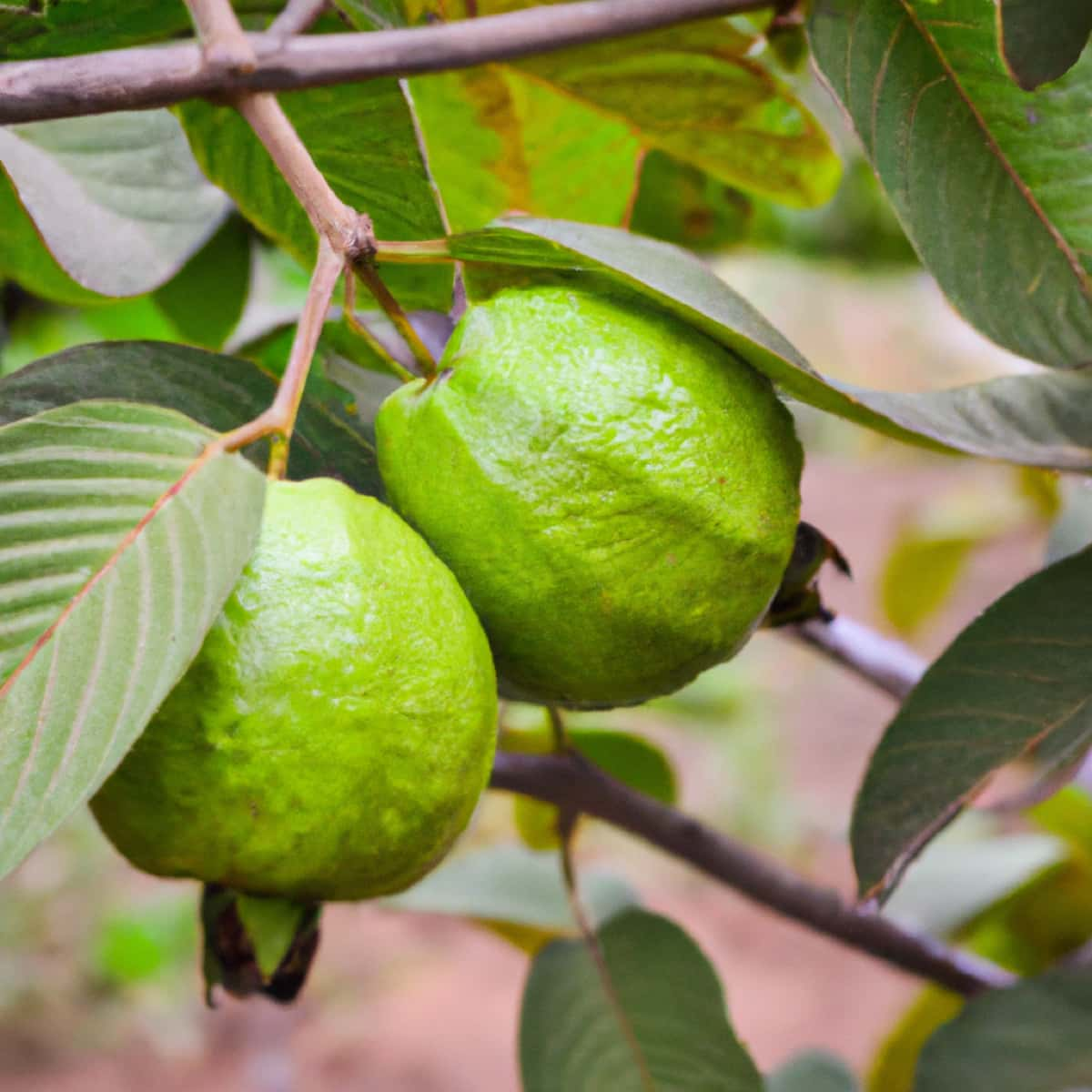
However, many guava plantations need higher productivity and better orchard health. Farmers can maximize their profits and overcome these hurdles by integrating intercropping techniques. Join us as we delve into guava intercropping and discover how it can double farmers’ income while ensuring sustainable agriculture practices.
What is Intercropping?
Intercropping is a farming practice that involves growing two or more crops together/combined in the same field simultaneously. It is a form of mixed cropping where different crops are strategically planted to maximize the use of resources and space. This technique offers numerous benefits to farmers and the environment. By combining complementary crops, intercropping promotes the efficient utilization of sunlight, water, and nutrients.
Different crops’ diverse root systems and canopy structures help reduce resource competition, resulting in higher productivity. Furthermore, intercropping can enhance pest and disease management. Some crops naturally repel pests or attract beneficial insects, reducing the need for chemical pesticides. In addition, intercropping can improve soil health by reducing erosion, increasing organic matter, and enhancing nutrient cycling.
Overview of Guava Production and Farming
Guava (Psidium guajava L.) is a popular and delicious fruit in India, particularly in Bihar and Uttar Pradesh, where 35% of the country’s guava plantations are located. However, these plantations suffer from low productivity and orchard health issues, like guava wilt and poor fruit quality. An integrated approach is needed to address these challenges, including disease management in flood-prone areas and salt-affected soils, improved drainage facilities, enhanced soil fertility, and microbial activities, and efficient crop management practices.
In case you missed it: Key Rules to Get Rid of Fruit Fly in Guava: Symptoms, How to Treat, Management, Chemical, and Organic Control
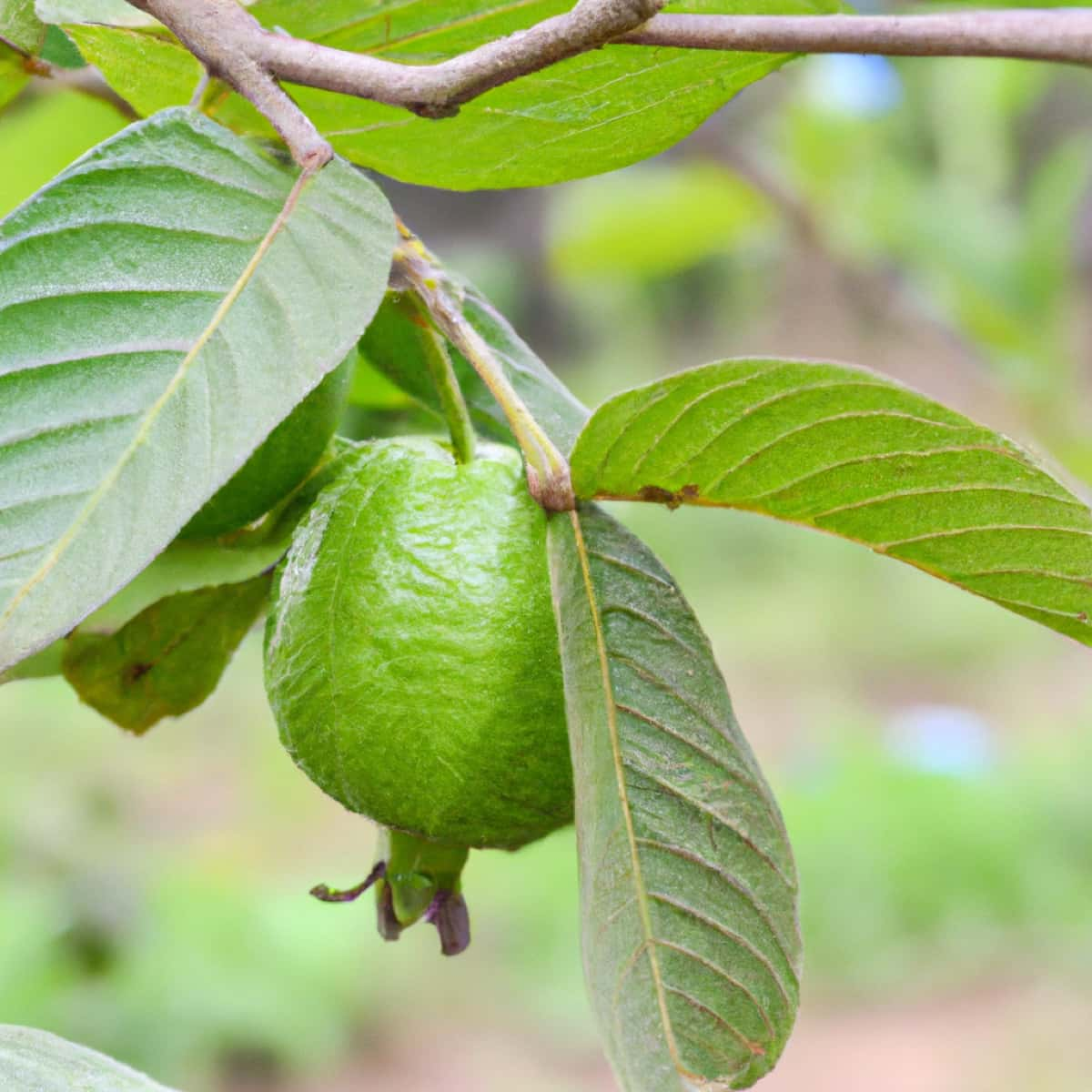
Intercropping has emerged as an economically feasible solution for managing guava orchards. Intercropping involves growing short-term cash crops in the spaces between guava rows until they reach the bearing age. This practice has shown positive results, especially with shade-tolerant tuber crops like suran, Turmeric, arvi, and bunda. Intercropping improves orchard health and provides additional income and employment for farmers without adversely affecting guava production.
Benefits of Guava Intercropping in Doubling Farmer’s Income
- Increased land utilization: Guava intercropping allows farmers to use available land efficiently by utilizing the spaces between guava rows, maximizing productivity per unit area.
- Diversified Income Streams: Intercropping with compatible crops provides additional yearly income, as the intercrops have different planting and harvesting periods. This diversification helps farmers reduce dependence on a single crop and mitigate risks associated with market fluctuations.
- Enhanced soil fertility: Intercropping systems help improve soil fertility through the complementary nutrient uptake of different crops. Leguminous intercrops, for example, can fix atmospheric nitrogen, enriching the soil for the subsequent guava crop.
- Pest and disease management: Intercropping can be a natural pest and disease control strategy. Some intercrops repel pests, reducing the incidence of guava-specific pests, while others can serve as trap crops, diverting pests away from the main guava crop.
- Improved water management: Intercropping reduces water evaporation from the soil surface by providing a canopy cover, thus conserving water and allowing efficient water use throughout the guava orchard.
- Increased biodiversity: Intercropping promotes biodiversity in the orchard, attracting beneficial insects and pollinators and contributing to improved guava pollination and yield.
- Reduced weed competition: Intercrops can act as living mulch, suppressing weed growth and reducing competition for resources, thereby minimizing the need for herbicides.
Types of Intercropping in Guava Orchard
Sequential Intercropping
- Sequential intercropping involves growing a second crop after the main crop has been harvested.
- Examples include cultivating short-duration crops like vegetables or pulses between guava rows once the guava fruits have been harvested.
Relay Intercropping
- Relay intercropping refers to planting a secondary crop alongside the main crop during its growth phase.
- For guava orchards, this can involve planting fast-growing crops like leafy vegetables or legumes between guava rows while the guava trees are still developing.
Companion Planting
- Companion planting involves growing compatible plant species together to benefit each other.
- In guava orchards, companion plants such as nitrogen-fixing legumes can be grown to enhance soil fertility, while flowering plants can attract pollinators and beneficial insects.
Alley Cropping
- Alley cropping includes planting rows of a second crop between rows of guava trees.
- This technique can promote diversification and provide additional income by cultivating crops like vegetables or medicinal plants in the inter-row spaces of the guava orchard.
In case you missed it: VNR Guava Farming: Cultivation Practices and Production Management
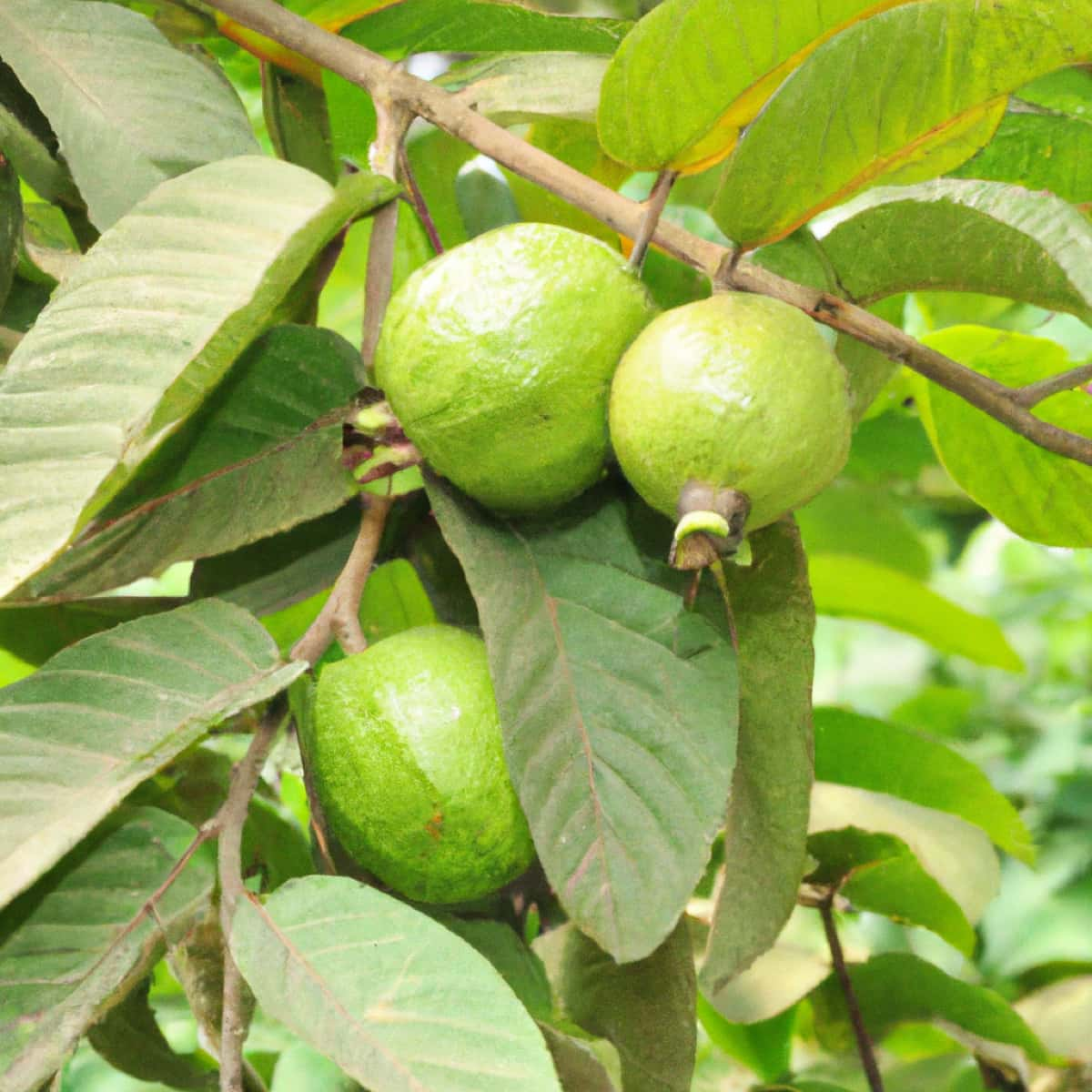
Selecting Suitable Crops for Intercropping with Guava
Arvi (Colocasia esculenta var. antiquarum)
- Planted using cormels with an average weight of 25 g each.
- Spacing: 60 x 45 cm (Row x Plant).
- Weeding and earthing up were performed after one month of planting.
- Irrigations are provided at one-month intervals.
- Corms and rhizomes were treated with Indofil M-45 (0.3%).
Bunda (Colocasia esculenta var. esculenta)
- Planted using uniform corms with an average weight of 30 g each.
- Spacing: 60 x 45 cm (Row x Plant).
- Weeding and earthing up were performed after one month of planting.
- Corms and rhizomes were treated with Indofil M-45 (0.3%).
- First irrigation is given after 20 days of planting, followed by monthly irrigations.
Turmeric (Curcuma domestica)
- Variety: Rajendra Sonia.
- Rhizomes with an average weight of 25 g each were selected.
- Spacing: 60 cm x 30 cm.
- Farmyard manure was applied at 10t/ha along with recommended N:P: K (25:25:35 Kg/ha).
- Split doses of nitrogen are provided during 2nd and 3rd irrigation.
- Five irrigations were provided at one-month intervals.
- Rhizomes treated with Indofil M-45 (0.3%).
Elephant Foot Yam (Amorphophallus companulatus)
- Variety: N.D.A.-5.
- Corms with an average weight of 200 g were selected.
- Spacing: 75 cm x 75 cm.
- Farmyard manure was applied at 10 t/ha along with N:P: K doses of 35:25:35 kg/ha.
- Split doses of nitrogen are provided during 2nd and 3rd irrigation.
- Four irrigations were applied at one-month intervals.
- Corms were treated with Indofil M-45 (0.3%) before planting.
Other Potential Crops for Intercropping with Guava
Brinjal, radish, carrot, bhindi, cowpea, beans, grams, mungbean, guar (cluster bean), and cowpea. Intercropping with these suitable crops not only utilizes the initial years of guava plantation effectively but also provides additional economic and nutritional benefits. Proper spacing, irrigation, fertilizer application, and pest management practices are crucial for successful intercropping in guava orchards.
Best Intercrop for Guava for Doubling Farmer’s Income
Intercropping in guava orchards has emerged as a viable strategy to provide additional income to farmers, especially during the juvenile phase of the Plant. Several intercrops have shown positive responses and have the potential to increase farmers’ income significantly. Here are some of the best intercrops for guava orchards:
- Black gram and Pigeon peas: These leguminous crops have been found to positively influence the growth characteristics of guava plants, such as height and girth. They contribute to improved soil properties and fertility, benefiting the overall health and productivity of the orchard.
- Ginger: Ginger has been identified as the most profitable option among the intercrops used in guava orchards. Ginger cultivation provides a lucrative opportunity for farmers, as it is in high demand in domestic and international markets.
- Leguminous crops and vegetables: During the pre-bearing period of guava orchards, short-growing leguminous crops like Mash, Moong, Guar, and various vegetables can be intercropped.
- These crops utilize the available space and resources efficiently, maximizing the productivity and income potential of the orchard.
- Intercropping not only enhances economic returns but also improves the fertility status of the soil. Farmers can optimize resource utilization, mitigate risks, and achieve sustainable agricultural practices by diversifying the cropping system.
- During the winter, crops such as Carrots, Radishes, Grams, and Beans can be sown among the rows of guava trees. These crops have shorter growing periods and complement the growth cycle of guava. Similarly, in the summer season, intercropping with crops like Okra, Eggplant, and Tomatoes can be practiced, further increasing the income potential of guava orchards.
- By adopting intercropping strategies, guava growers can harness the full potential of their orchards and double their profits. Intercropping not only provides additional income during the early stages of guava growth but also improves the overall productivity and quality of the orchard.
In case you missed it: How to Start Hybrid Guava Farming in India: Varieties, Business Plan, and Cultivation Management
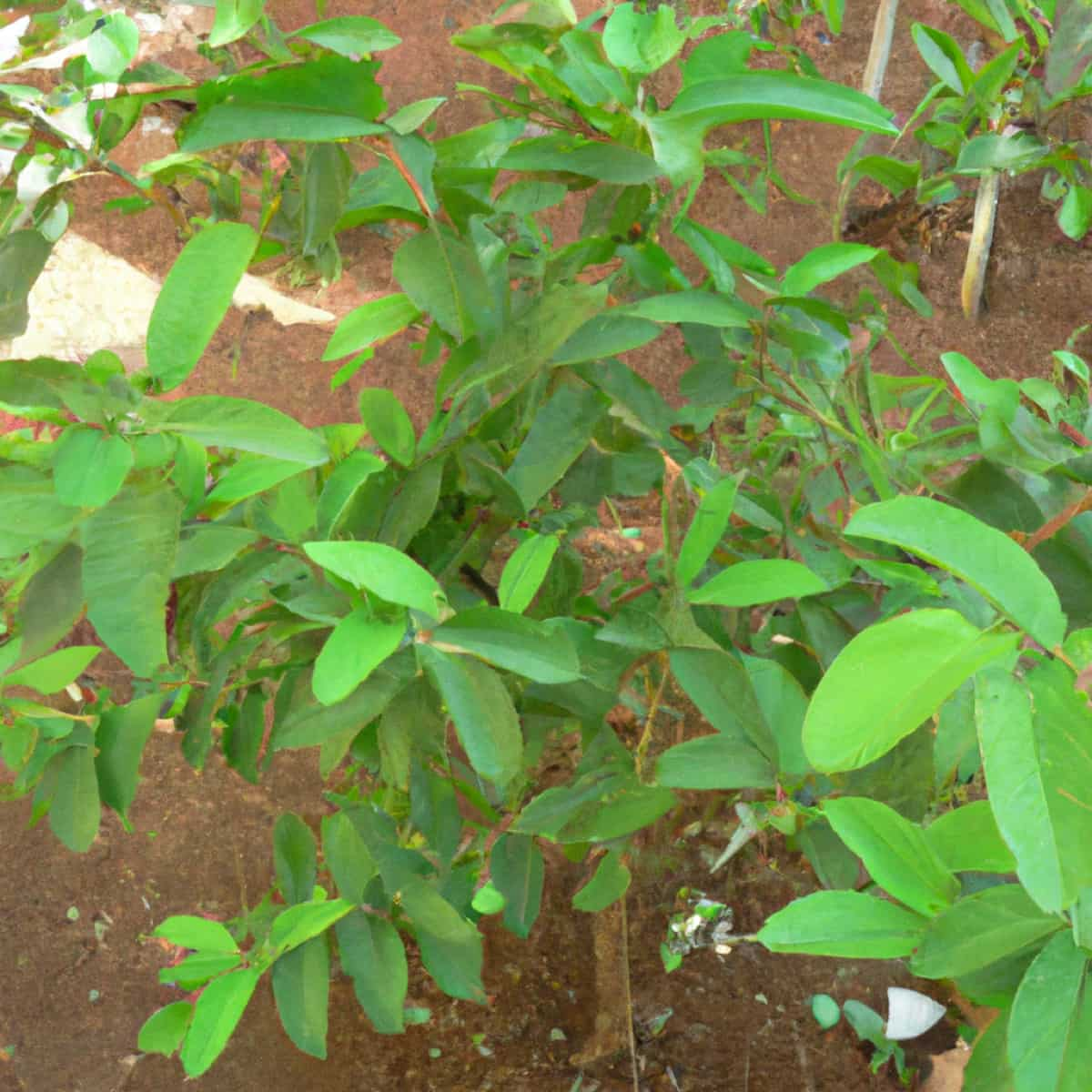
Implementing Guava Intercropping Techniques
Intercropping is a valuable technique that can significantly enhance farm productivity and provide additional income to guava growers. Farmers can optimize resource utilization, improve soil health, and maximize the overall yield by implementing effective guava intercropping techniques.
Crop Selection
- Choose suitable intercrops that complement the growth requirements of guava, such as leguminous crops, vegetables, and short-duration crops.
- Consider factors like market demand, profitability, and adaptability to local climatic conditions when selecting intercrops.
- Important vegetables that can be grown as intercrops in guava orchards to enhance farmer’s income include:
- Solanaceous vegetables: Tomato, Brinjal, Chillies, and Capsicum (suitable for well-established orchards, 3-4 years onwards).
- Cruciferous vegetables: Cauliflower, Cabbage, Knolkhol, Broccoli (suitable for growing in newly establishing orchards, 0-3 years).
- Cucurbitaceous vegetables: Bottle gourd, Bitter gourd, Cucumber, Muskmelon, Watermelon, Pumpkin (suitable for well-growing established orchards, 3-4 years onwards).
- Leafy vegetables: Spinach, Coriander, Fenugreek (suitable for growing in newly establishing orchards, 0-3 years).
- Onion and Garlic (suitable for growing in newly established orchards and in established orchards).
- Ginger and Turmeric (suitable for growing under high-density orchards).
- Leguminous vegetables: Peas and Beans (suitable for growing in poor fertility orchards).
Spacing and Planting
- Maintain appropriate spacing between guava plants and intercrops to avoid resource competition and ensure optimal growth.
- Follow recommended planting techniques for each intercrop, considering factors like row spacing, plant density, and depth of planting.
In case you missed it: How to Control Pests and Diseases in Guava: Causes, Symptoms, Chemical, and Biological Management
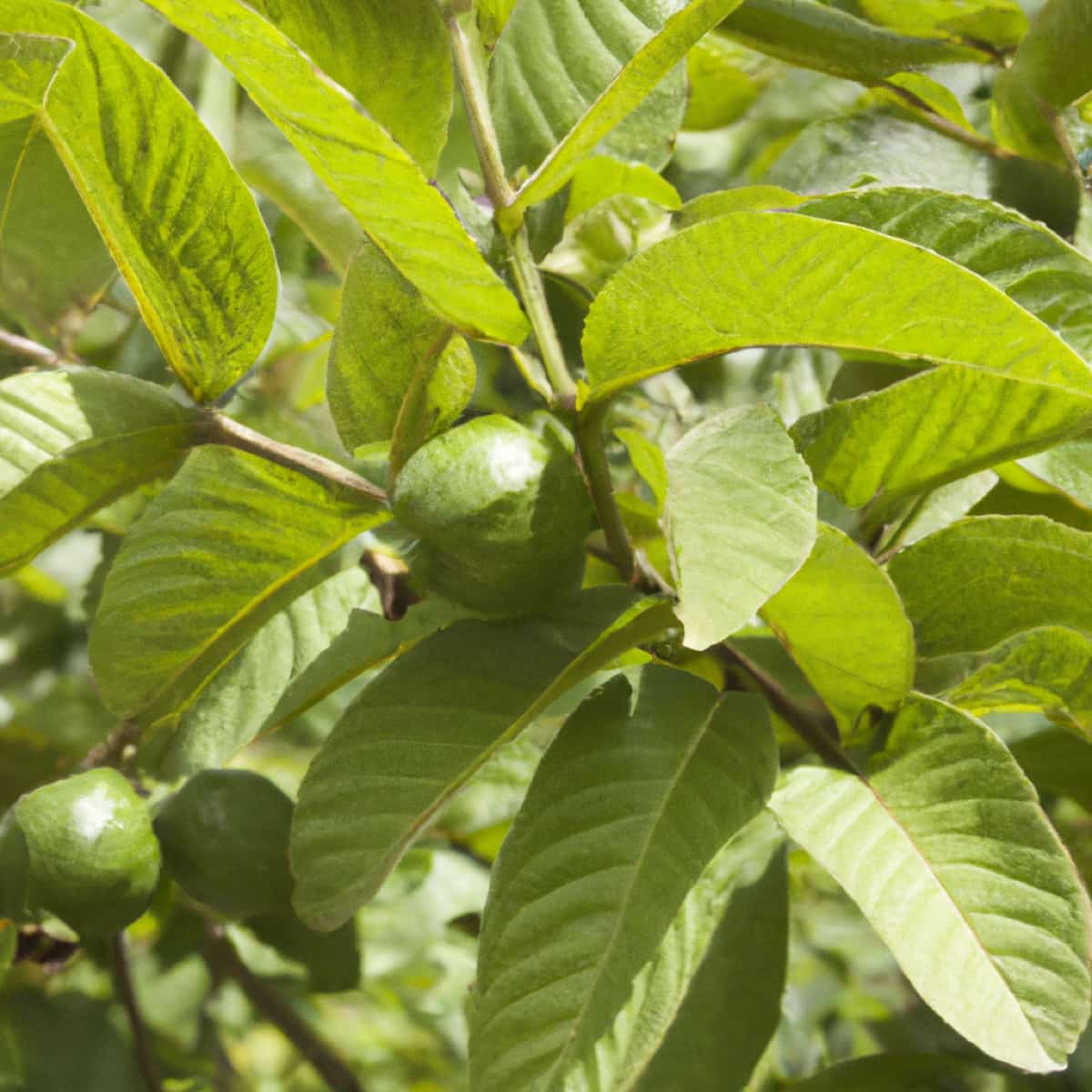
Crop Rotation
- Practice crop rotation to minimize pest and disease incidence and maintain soil fertility.
- Rotate intercrops with different nutrient demands to prevent depletion and improve soil health.
Weed Management
- Implement effective weed management strategies, including manual weeding, mulching, and use of appropriate herbicides, to suppress weed growth and minimize competition with intercrops.
Irrigation and Water Management
- Provide adequate irrigation to both guava and intercrops, considering their specific water requirements.
- Implement water-saving techniques like drip irrigation or precision watering to ensure efficient water use and reduce water stress.
Nutrient Management
- Conduct regular soil testing to assess nutrient levels and apply appropriate fertilizers to meet the nutritional requirements of guava and intercrops.
- Utilize organic manures and biofertilizers to enhance soil fertility and promote sustainable nutrient cycling.
Pest and Disease Management
- Implement pest management strategies to control pests and diseases in guava and intercrops.
- Use environmentally friendly approaches like biopesticides, crop rotation, and proper sanitation practices to minimize chemical pesticide usage.
Harvesting and Marketing
- Coordinate intercrop harvesting schedules with guava harvesting to ensure efficient labor utilization and timely market availability.
- Establish market linkages and explore value-added opportunities for intercrop produce to maximize profitability.
Farmers can optimize land utilization, diversify income sources, and achieve sustainable farm productivity by adopting these guava intercropping techniques. It is essential to tailor the intercropping system to local conditions, monitor crop performance, and continuously refine the practices for the best results.
Merits of Intercropping in a Guava Orchard
- Risk reduction: Intercropping reduces the risk of crop failure by diversifying crops.
- Optimal space utilization: The available space between rows of the main crop is efficiently utilized.
- Resource efficiency: Intercropping enables efficient utilization of available resources.
- Increased returns: Intercropping increases the gross returns from a given unit of land.
- Yield stability: Intercropping provides greater stability of yield across different seasons.
- Weed, pest, and disease control: Intercropping helps better control weeds, pests, and diseases.
- Soil erosion prevention: Intercropping helps prevent soil erosion.
- Pest and disease reduction: Intercropping reduces insect and mite pest populations and plant diseases due to crop diversity and increased distance between plants of the same species.
In case you missed it: A Guide to Understand Guava Plant/Tree Propagation: Check How this Guide Helps Guava Farmers
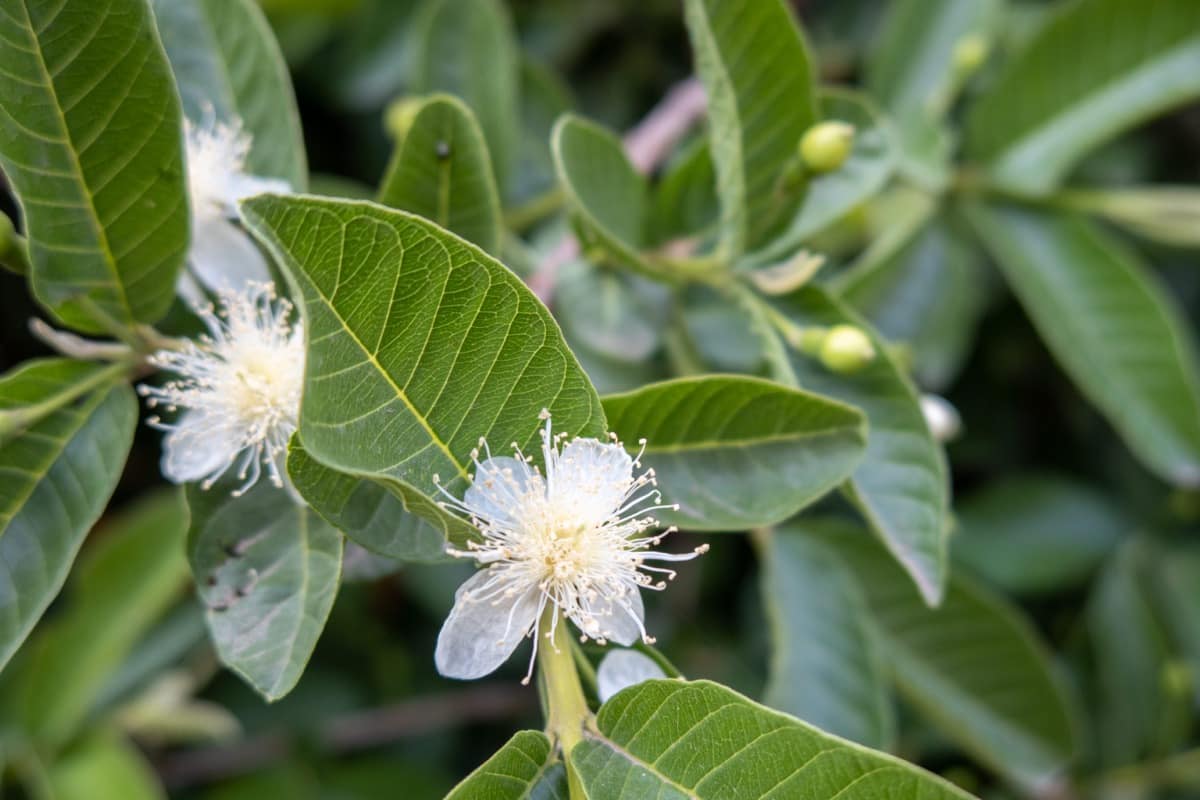
Demerits of Intercropping in a Guava Orchard
- Increased agricultural inputs: Intercrops may require additional agricultural inputs.
- Machinery obstruction: Intercropping can create obstacles to the free use of machines during intercultural operations.
- Allelopathic effects: One crop can have harmful effects on another due to biochemical exudation, known as allelopathy.
Conclusion
Implementing guava intercropping techniques can significantly optimize farm revenue and increase farmers’ income. Guava intercropping presents a promising opportunity for farmers to enhance their financial prospects by diversifying crops, efficiently utilizing resources, and improving yield stability.
- Types of Pesticides Used in Agriculture: A Beginner’s Guide
- Economical Aquaculture: A Guide to Low-Budget Fish Farming
- 15 Common Planting Errors That Can Doom Your Fruit Trees
- How to Make Houseplants Bushy: Effective Tips and Ideas
- Innovative Strategies for Boosting Coconut Pollination and Yield
- Pollination Strategies for Maximum Pumpkin Yield
- The Complete Guide to Chicken Fattening: Strategies for Maximum Growth
- Natural Solutions for Tulip Problems: 100% Effective Remedies for Leaf and Bulb-Related Issues
- Revolutionizing Citrus Preservation: Towards a Healthier, Greener Future
- Natural Solutions for Peony Leaf and Flower Problems: 100% Effective Remedies
- Maximizing Profits with Avocado Contract Farming in India: A Comprehensive Guide
- Natural Solutions for Hydrangea Problems: 100% Effective Remedies for Leaf and Flowers
- The Ultimate Guide to Choosing the Perfect Foliage Friend: Bringing Life Indoors
- From Sunlight to Sustainability: 15 Ways to Use Solar Technology in Agriculture
- The Ultimate Guide to Dong Tao Chicken: Exploring from History to Raising
- The Eco-Friendly Makeover: How to Convert Your Unused Swimming Pool into a Fish Pond
- Mastering the Art of Delaware Chicken Farming: Essentials for Healthy Backyard Flocks
- 20 Best Homemade Fertilizers for Money Plant: DIY Recipes and Application Methods
- How to Craft a Comprehensive Free-Range Chicken Farming Business Plan
- Brighten Your Flock: Raising Easter Egger Chickens for Beauty and Bounty
- How to Optimize Your Poultry Egg Farm Business Plan with These Strategies
- Subsidy for Spirulina Cultivation: How Indian Government Schemes Encouraging Spirulina Farmers
- Ultimate Guide to Raising Dominique Chickens: Breeding, Feeding, Egg-Production, and Care
- Mastering the Art of Raising Jersey Giant Chickens: Care, Feeding, and More
- Ultimate Guide to Raising Legbar Chickens: Breeding, Farming Practices, Diet, Egg-Production
- How to Raise Welsummer Chickens: A Comprehensive Guide for Beginners
- How to Protect Indoor Plants in Winter: A Comprehensive Guide
- Ultimate Guide to Grow Bag Gardening: Tips, Tricks, and Planting Ideas for Urban Gardeners
- Guide to Lotus Cultivation: How to Propagate, Plant, Grow, Care, Cost, and Profit
- Agriculture Drone Subsidy Scheme: Government Kisan Subsidy, License, and How to Apply Online
- Ultimate Guide to Raising Araucana Chickens: Breed Profile, Farming Economics, Diet, and Care
- Bringing Hydroponics to Classroom: Importance, Benefits of Learning for School Students
- Ultimate Guide to Raising Polish Chickens: Breed Profile, Farming Economics, Diet, and Care
- Ultimate Guide to Raising Australorp Chickens: Profile, Farming Economics, Egg Production, Diet, and Care
- Silkie Chicken Farming: Raising Practices, Varieties, Egg Production, Diet, and Care
- Sussex Chicken Farming: Raising Practices, Varieties, Egg Production, Diet and Care